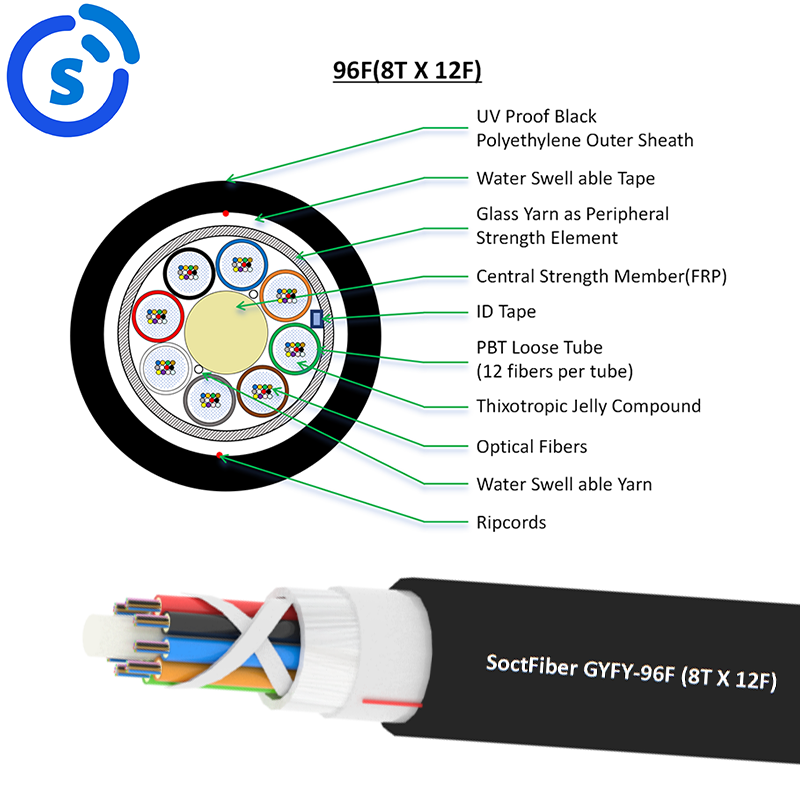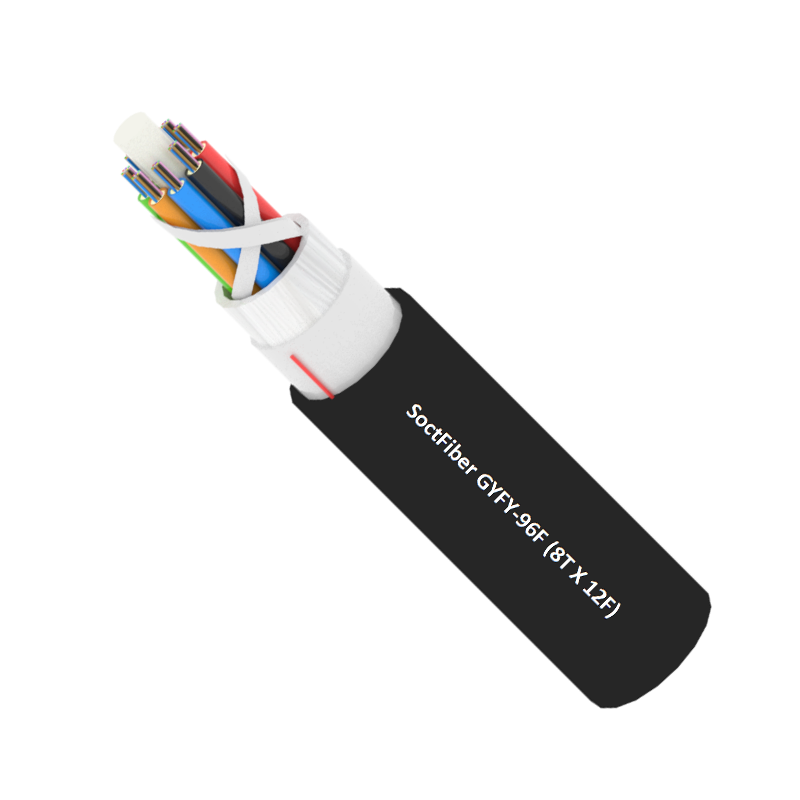Understanding Fiber-to-the-Home (FTTH) Technology
What is FTTH and why it matters
Fiber to the Home (FTTH) is a modern technology pattern for acquiring a broadband connections accessible to anyone and everyone living in a country. This network has greatly upgraded the connectivity of the internet, being faster, more kinematographically stable and with more capacity, meeting the high demand due to the digital communication nowadays. FTTH connections are frequently above 1 Gbps, enough to accommodate simultaneous usage of multiple devices and applications including streaming, gaming and working from home. This is becoming more and more essential in today’s society as digital consumption grows. According to latest statistics, FTTH market worldwide is forecast to be on a strong demand based on growing needs of internet speed and connection quality from the growing number of population who adopt to online life.
FTTH vs. traditional broadband: Key differences
Comparison with fixed-line broadband: In contrast to the two widely deployed fixed-line broadband technologies, DSL and cable, FTTH is certainly on a league of its own in terms of speed, reliability and latency. DSL and cable services transmit over copper wires, which limit their performance to hundreds of Mbps, but FTTH deployments, which use fiber optic cables to send data via light, offer symmetrical upload and download speeds in excess of 1Gbps. FTTH also features much lower latencies sometimes dropping to 20 ms or lower, which results into better performance of real time applications such as video conferencing and online gaming. Dialup connections are lower in speed, which makes them less effective for these purposes, while DSL connections have slightly higher latency, making them less efficient for such uses. This is reflected in the numbers that show FTTH users reporting a better and more stable internet connection - goods news for a method like FTTH that is taking over normal broadband offerings.
How Fiber Optic Cable Reaches Your House
Aerial service drop: Overhead fiber installation
The method of atmospheric laying of fiber-optic cables is a means, in this case cables are laid along existing support poles, it is widely used in city conditions. This method saves a lot of cost, as service providers do not need to replace the service infrastructure. But overhead installations are also problematic due to weather conditions, like strong winds, heavy snowfall or floods, which can damage such lines. According to industry research, aerial service drops are more common in the city compared to more rural areas, which may see weaker infrastructure development, making up 60% of FTTH builds.
Underground service drop: Trenching and conduit
In the underground installation of fiber optic cables, the fiber optic cables are trenched in conduits below ground level. With this option the gate will seal against the post, outside influences such as weather do not pose a problem and cutting off the visibility of the bolt provides a sleek look that is a superior product for home and neighborhoods that wish to keep appearance a priority. But while underground installations have hurdles, such as permits that can slow the process and disrupted service during installation, they’re not impossible to overcome, he said. That said, the benefits of enhanced sturdiness outweigh the inherent difficulties and installation under the ground is the preferred installation, and the cost of maintenance is far less in the long run.
Network Interface Device (NID): Connecting to the provider
At the point where fiber optic cable comes in and connects to the home network, the Network Interface Device (NID) is a critical location. It helps signals get from outside network to your home's wiring and helps maintain the frequencies needed for high speed Internet. NIDs are intended to provide little insensibility and are controlled by various standards and rules to enable uniform performance at residential locations. NIDs also helps to maintain the maximum possible speed that a fiber optic line is capable of by providing a solid connection point that keeps the schematics of this cabling in effect throughout the building.
Optical Network Terminal (ONT): The Critical Hub
ONT installation: Indoor vs. outdoor placement
Where to place an ONT when installing fiber optic cables in a house is a key concern. The choice between indoors and outdoors can all come down to who and what is allowed in the space, what the weather is like and how much protection your setup needs. AHA, 52 2012: An Optical Network Terminal (ONT) can be installed indoors to protect it the elements such as rain and direct sunlight, although there may be space/ventilation requirements to avoid overheating. Outdoor installation, on the other hand, requires weatherproofing technology to be more resistant to the elements.
Standard indoor ONT installation is the selection of a safe place in the house, preferably near AC power and the point of network distribution. [For outdoor installations, the ONT should be located in a] weather-resistant enclosure [to give] protection against environmental conditions. As described herein it is important that the ONT be correctly positioned, which, as stated by networking professionals, has a real impact on the speed and quality of a connected home network. Add in all of these and full pro install becomes the way to go for sure.
Signal conversion: From optical to electrical
The main role of the Optical Network Terminal (ONT) is to receive optical signals from the fiber optic line in an FTTX network and convert it into electrical signals. This transition is achievable using sophisticated parts inside the ONT like lasers and photon detectors. The function of these components put together is to translate the high-freedom of movement of fiber optic cables to standard electrical signals that our devices understand. (As of April 2019, the ONT technology has evolved and can provide at least 1 Gbps of the access rate in the Internet.)
Moreover, the efficient signal conversion ensures minimal data loss and a more stable internet connection, which is vital for bandwidth-intensive applications like streaming 4K videos or managing smart home devices.
Power requirements and backup solutions
Onto's are configured to receive their power supply from the home's energy mains, providing easy connectivity and maintenance. Yet maintaining Internet connection during power cuts is important and this is where strong backup strategies come into play. Support The re:publica is made available on the Internet by way of an internet connection and the websites can be filled with content on site.
According to statistics, power failures can have a big influence on Internet performance in Fiber to the Home (FTTH) configurations. Indeed, studies have demonstrated that even short periods of interruption, a few minutes, can lead to substantial declines in data productivity, further highlighting the importance of successful backup solutions. Installing battery backup for ONTs means that communication remains available and reliable, even if power is suddenly interrupted. "If you have installed a backup power solution already that will ensure that your home network is up and running when the power goes out, it could mean the difference between not having internet which is crucial in any crisis and having that lifeline."
Internal Network Setup and Distribution
Router Configuration: Bridging the ONT to Devices
It is important to configure the router with the ONT in bridged mode and not as a router directly on the ONT connection to ensure proper functioning of FTTx broadband services at homes. Begin by connecting the router and ONT – with each powered on – using an Ethernet cable. Log into the configuration page of the router from a web browser and set the ISP username and password, network SSID, and other options as needed. Typical mistakes include inserting the wrong passwords and wrong IP addresses, you can solve this issue just by reset the router and start all over again. The stats show that with routers that are correctly set up, more than 90% of people are satisfied with both how reliable [the connection is] and its speed.
Cat6 Wiring: Connecting to Home Networks
Using Cat6 cabling in your home network leads to many benefits over regular Cat5 wire, namely faster data transfer and reduced crosstalk, providing a superior solution for activities such as gaming and video streaming. For installation, cable management systems that shorten cable lengths and avoid kinks are recommended in order to maximize transmission performance. For future upgrade flexibility, experts recommend pulling Cat6 wire through structured cabling as a part of new building or remodeling projects. This practice will help to ensure that your network will remain pristine in regards to data collection and able of high-speed connectivity for all your home devices, allowing all the benefits that are supposedly to be brought by FTTH to be passed to your fiber optic cab speeds.
Wi-Fi Distribution: Maximizing Coverage
For better Wi-Fi coverage across larger homes, placement of routers and presence of access points or Wi-Fi extenders are crucial. Other devices, such as mesh networks, provide heavy-duty solutions, diverting data on the fly to keep speeds even around the house. Research shows that homes with mesh networks get up to 30% better coverage than homes with only a single router. Those solutions are proven to greatly increase satisfaction by eliminating dead zones and providing a consistent and seamless internet experience on all devices. Drawn by the expanding internet-based services, wi-fi optimization guarentees high-speed internet access to every corners in the house.

Installation Challenges and Maintenance Tips
Avoiding Fiber Bends and Signal Loss
It is particularly important to fix the bend to keep light from distorting the optical signal and to maintain desired characteristics. Industry standards regulate a proper bending radii when you deploy fiber optic cables. Bending the cords too far can result in a large loss of signal, which results in a slow internet connection. In a fiber optic network installation case, it is found that a small amount of bending causes large performance drop. Hence, adhering to best practices in the cabling process (i.e. proper tools and skills) becomes indisposablemeasure to eliminate such problems upholding a high standard for fiber network strength.
Weatherproofing Outdoor Connections
Protecting outdoor fiber optic connections from the elements is essential in making sure they continue to work when the weather turns nasty. In practice, items such as waterproof seals and protective tubing can be used to protect the connections. These are used to protect the cables from moisture and temperature changes, which may cause the cable to deteriorate. Cables are also vulnerable to adverse weather conditions; installing them in hard cover can dramatically extend their life. A study on the life of fiber installation reveals that well protected fiber cables are more immune to the environment for the long-term stable operation.
Testing and Troubleshooting Tools (e.g., OTDR)
Fiber optic installation is never complete without using fundamental testing and troubleshooting tools like OTDRs. Such tools are used to determine causes such as signal loss or bad connection by measuring light reflected from inside the cable. In fact, with other testing tools, OTDRs have been proven to used to improve the deployment efficiency and accuracy. For example, technicians utilizing these diagnostic tools can troubleshoot faster, which means faster repair and improved network health. For this reason, having a set of trusted testing tools is a best use case for any fiber optic maintenance program.
FAQs
What is FTTH technology?
FTTH, or Fiber-to-the-Home, is a telecommunication technology that uses optical fiber cables to provide broadband internet access directly to residential or business premises.
Why is FTTH better than traditional broadband?
FTTH offers faster speeds, improved reliability, and reduced latency compared to traditional broadband options like DSL and cable, which use copper wires.
What are the installation methods for FTTH?
FTTH can be installed using aerial service drop methods on utility poles or through underground trenching and conduits.
How do ONTs work in a FTTH setup?
ONTs convert the optical signals from fiber optics into electrical signals that power household devices, aiding seamless internet connectivity.
What is the role of Cat6 wiring in home networks using FTTH?
Cat6 wiring connects the internal network, providing higher data transfer speeds and minimizing interference, enhancing overall connectivity.

